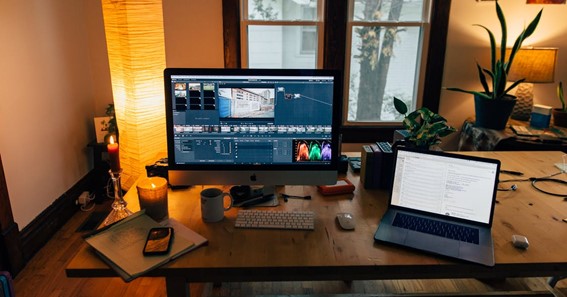With video-editing software like iMovie and Windows Movie Maker freely available to the public, it’s easier than ever to become a video maker. But if you want to create quality videos that viewers can’t stop watching, visit this website.
You’ll also need to make sure you have your editing basics down pat before you get started. Here are seven essential video editing tips every video maker should know before they press record…
1) Preparation is Key
Whether you’re just starting out or have been editing for a while, you’ll want to make sure that your video footage is properly prepared. Prepping takes a bit of time, but with these tips, it’s easy. From organising your clips to improving quality, there are some essential steps you can take as a video maker to make sure you get things right! Let’s dive in.
2) Don’t Neglect The Details
Details are often what separates a good video from a great one. Though it’s not necessarily true that content is king, some of our favourite videos have well-planned details. These extra touches don’t make or break your video, but they do add value to it and can give your audience something more to remember you by.
As a video maker, you need to consider how each element fits into your overall message. If you’re going for an artsy look, then go all out. But if your goal is to inform people about a new product, then don’t get too fancy with things like fonts and graphics.
3) Keep It Simple
The editing software you use can create or break your video-editing experience. The more bells and whistles it has, the harder it is to learn, but you also have access to tools that professionals often don’t. This can be a problem if you’re just learning how to edit.
Don’t let an abundance of features intimidate you. Find one that fits your needs and keep it simple. Having a video maker online is always a great option as well.
4) Use Transitions When Appropriate
When editing, take time to examine your footage and find natural places to transition from one shot to another. Whether you’re shooting an interview or a natural sequence, look for times when it makes sense to cut from one shot to another (for example, when a person finishes speaking). This will give your video a more professional feel.
With a video maker, transitions are easier than ever before, but they can still be time-consuming if you don’t know what you’re doing. If possible, use a program that has automatic transitions already built-in. If not, consider adding them yourself with software like Adobe After Effects.
5) Tell A Story In Your Video
People can be more engaged with a story than an advertisement, and video is often one of your best mediums for doing so. Whether it’s recounting a personal experience, demonstrating how a product works, or explaining a concept that would be hard to convey in any other format, you have an opportunity to share yourself and your content with viewers on a deeper level when you use stories. A video maker can help you tell your story, or you can do it yourself with a good digital camera and some editing software.
A few tips for telling a story in your video: Use natural lighting, not direct sunlight. Avoid close-ups of people’s faces. Don’t be afraid to get creative with angles and perspectives. Try using a tripod to keep your camera steady while you move around it, or shoot from different heights to give viewers different views of your subject matter.
6) Voiceover Can Add Depth To Your Video
Most video maker software will allow you to add a voiceover, or even just text overlays. If your video is longer than 30 seconds, adding a voiceover or an overlay can make it more engaging for viewers, and create some context for why you made each edit in your final product. That way, if someone watches your video on mute or decides not to watch it at all, they still know what to expect from it.
7) White Space Is Important
A cluttered screen can be distracting for your viewers. White space is important in video editing because it allows you to direct your viewer’s eye across your frames. Use white space to draw attention to other elements on-screen, or use it as a contrasting element.
For example, black and white film footage often makes splashes of colour pop even more. In digital video, you can achieve a similar effect by using varying shades of grey (with an emphasis on dark grey) to highlight an object against a busy background.
White space also helps build dramatic tension: Cluttered frames are overwhelming. Less is more when it comes to using visual cues to emphasise key moments in your story.
Final Thoughts
A video maker makes more than just videos. They need to know how to edit and produce their own videos, as well as have a strong understanding of what’s going on behind the scenes. That’s why I recommend starting with a solid foundation in film-making and then moving into video editing. You’ll be able to create better content faster and have more opportunities for clients. The top seven tips below will help you get started.
To Know Some Great Stuff Do Visit TeluguWiki
To Know Some Great Stuff Do Visit TheHindiGuide
To Know Some Great Stuff Do Visit TheSBB
